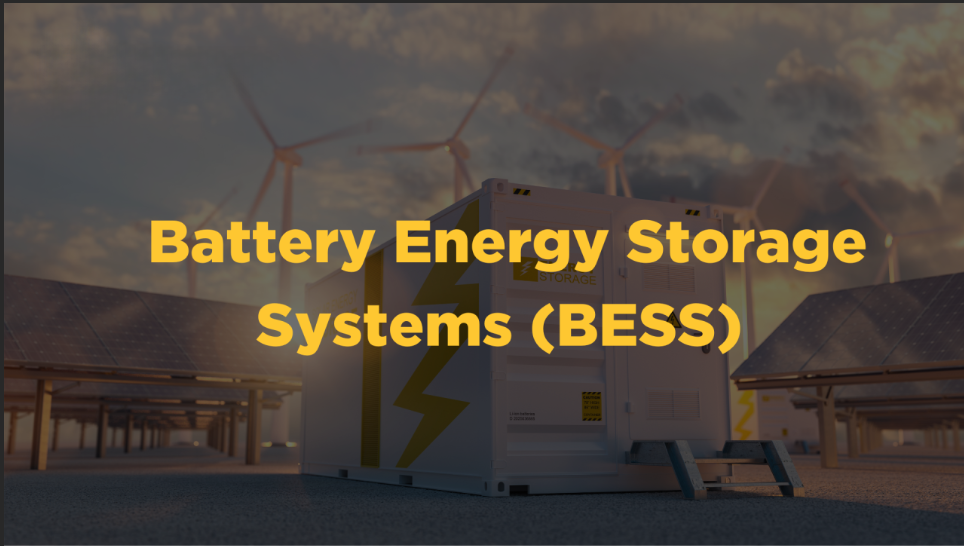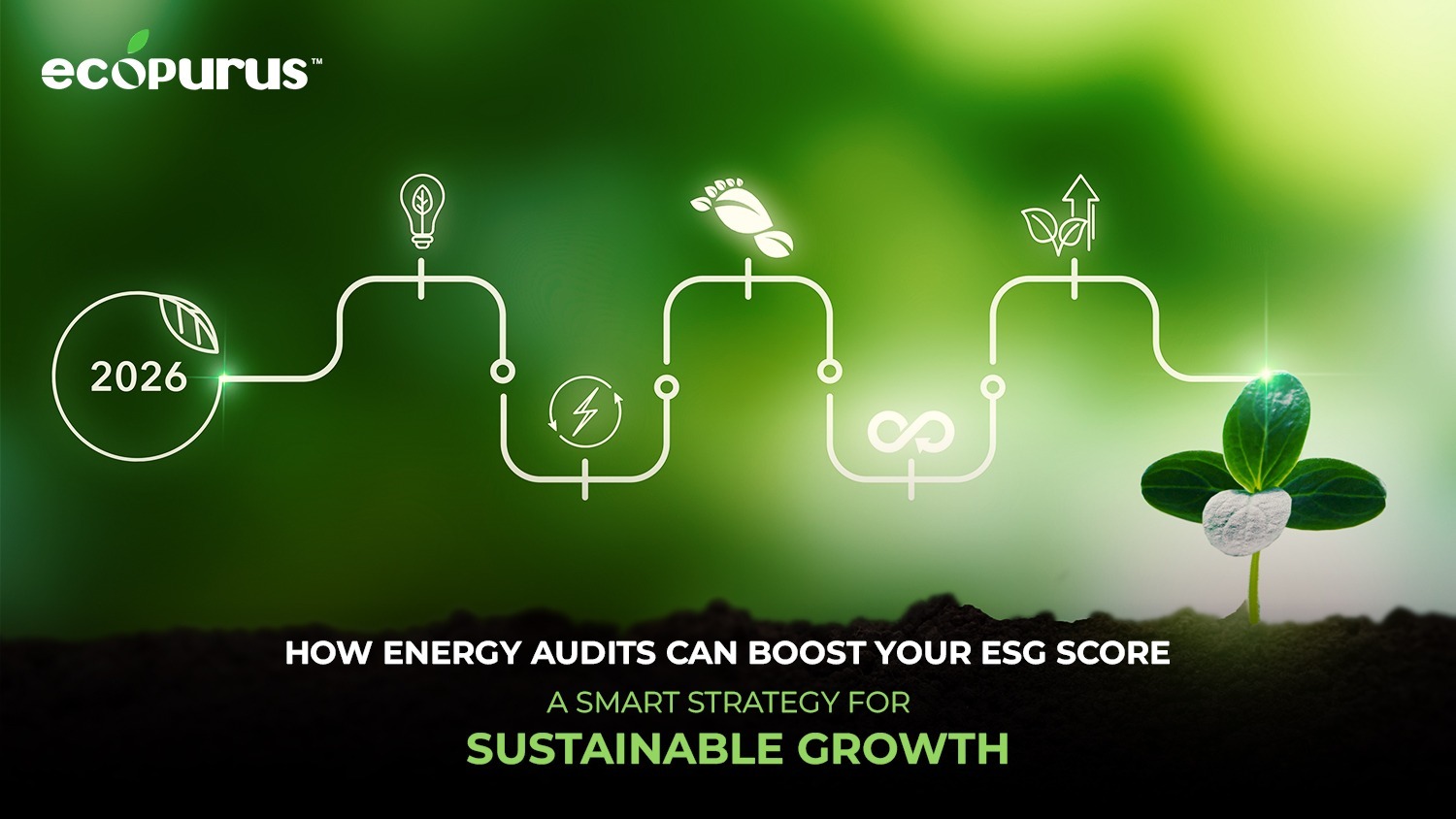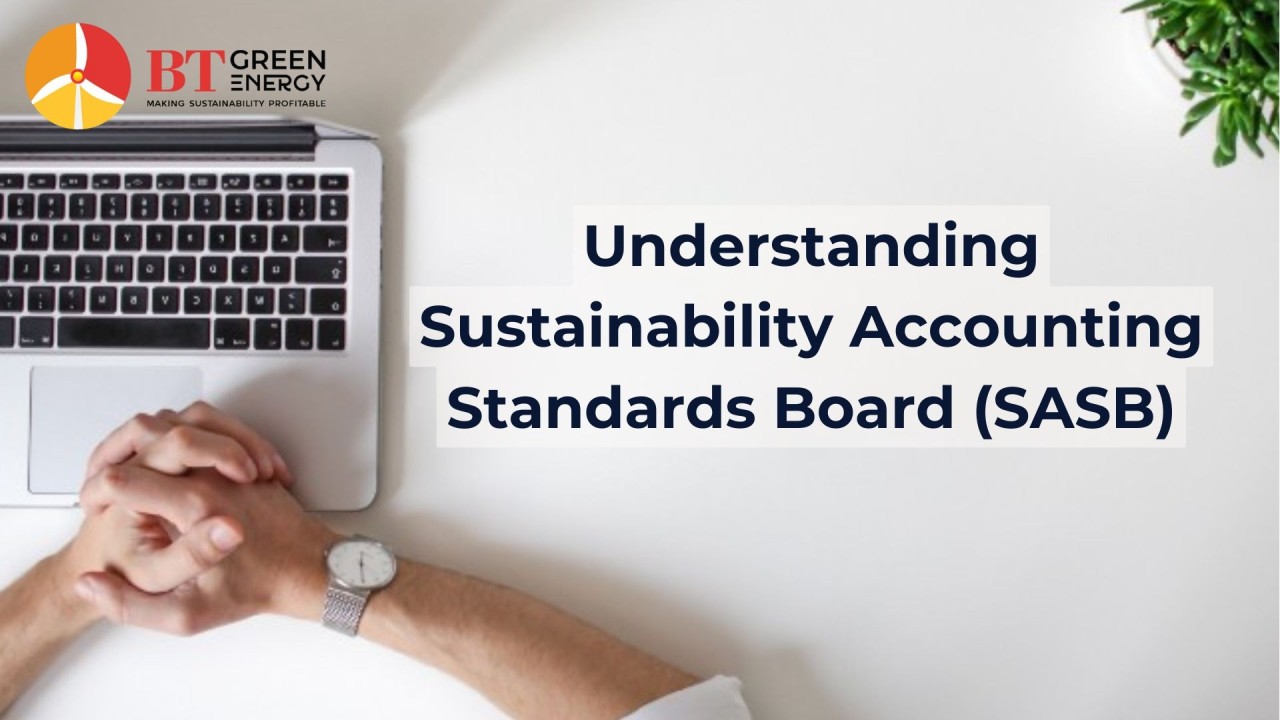
Battery Energy Storage Systems (BESS)
As of March 2024, India has reached 219 MWh capacity in Battery Energy Storage System (BESS) with a significant portion being directly linked to renewable energy projects, offering lower energy costs, environmental benefits, and greater independence from the grid.
A Battery Energy Storage System (BESS) is an advanced technology solution that allows electricity to be stored and used as needed. BESS enhances energy management by combining batteries, AI, and machine learning, allowing users to adjust to demand variations while ensuring a consistent supply.
Essentially, BESS acts as giant batteries, storing energy generated by sources such as solar and wind. This is critical since renewable energy sources may not produce electricity at a steady rate. BESS ensures that even when the sun isn’t shining or the wind isn’t blowing, there is a steady power source available.
Primary components of BESS
Battery: The battery is the core of the system, typically using lithium-ion technology (the same type used in smartphones and electric vehicles), although other battery technologies like solid-state and flow batteries are also emerging.
Battery management system (BMS): BMS is the brain of BESS installation. It is an Advanced software that monitors energy flow, automatically stores or releases energy as needed and ensures that the system is efficient, keeping track of the internal performance of the battery cells, system parameters, and potential hazards.
Power conversion/conditioning system (PCS): Converts the stored energy into usable electricity that can be fed into the grid or directly into homes and industries. During off-peak time, the PCS takes the energy from the grid to store in the BESS.
Key terms related to BESS
- Power Capacity is how much power the battery can give at one time.
- Energy Storage is the total amount of energy the battery can hold.
- Storage Duration tells you how long the battery can supply power before it runs out
- Depth of Discharge (DoD) shows how much of the battery’s total energy has been used.
- Cycle Life is how many times you can charge and use the battery before it starts to wear out.
- Self-Discharge means that even when the battery isn’t being used, it loses some energy over time.
- Discharge Rate is how fast the battery gives off energy over time.
- State of Charge (SoC) is how much energy is left in the battery.
- Round-Trip Efficiency measures how much energy you can get back after charging it, accounting for losses.
- Ramp Rate is how quickly the battery can increase or decrease its power output.
- Response Time is how fast the battery can start working when needed.
The Indian BESS market
The Indian BESS market is categorised into segments based on two key factors:
Battery Type
BESS technologies differ primarily based on the type of battery used. The common battery types in the Indian market include:
- Lithium-Ion Batteries (Li-ion): The most popular type, known for high energy capacity, long life, and quick charging. They’re widely used in renewable energy projects, electric vehicle charging, and grid support due to their efficiency and scalability.
- Lead-Acid Batteries: Though less efficient, these are cheaper and reliable for rural electrification, off-grid power, and small renewable projects. Ideal for lower-cost applications where frequent replacement is manageable.
- Flow Batteries: Best for large-scale, long-duration storage (up to 10 hours). They offer a long life and can handle big energy loads over time, making them great for grid management and industrial uses.
- Other Batteries: Includes nickel-cadmium, sodium-sulphur, and solid-state batteries, used in niche applications requiring specific features like heat resistance or durability.
Connection Type
Connection type determines how energy storage systems interact with the power grid or remain independent of it. This segmentation includes:
- On-Grid Systems: These are connected to the main power grid and help balance energy supply, manage peak loads, and integrate renewable energy. They store excess power from sources like solar and wind during off-peak hours and release it during high demand. Common in large projects, industrial plants, and commercial centres for cost savings and reliable power.
- Off-Grid Systems: These operate independently from the main grid and are crucial for providing electricity in remote areas or as backup where grid access is unreliable. Often paired with solar or wind power, they support agriculture, small businesses, and households where grid electricity is unavailable.
This setup offers flexibility for both large-scale grid needs and small, independent power solutions.
Regulations Around BESS in India
Battery Energy Storage Systems (BESS) was introduced in India to support the growing demand for renewable energy integration and enhance grid stability. The government recognized the need for effective energy storage solutions to manage the fluctuating nature of renewable sources.
The Central Electricity Authority (CEA) plays a pivotal role in overseeing the entire process. It is responsible for setting guidelines for energy storage systems, including their interaction with the grid. This regulatory authority ensures that grid codes are followed. It is also responsible for managing the rules set by the Central Electricity Regulatory Commission (CERC). Businesses looking to implement BESS must comply with these rules to maintain safety and efficiency in their operations.
Additionally, since electricity is a concurrent subject in India, state-level regulations also govern BESS integration. Different states have unique policies regarding renewable energy storage and grid interaction, requiring businesses to align with local regulations to ensure compliance and successful implementation of BESS solutions.
A key component of this framework is the Renewable Purchase Obligation (RPO) and Energy Storage Obligation (ESO), which mandates that obligated entities such as distribution companies (DISCOMs), open access consumers, and captive power plants must source a specific percentage of their electricity from renewable sources. The BESS system ensures that electricity can be stored and used as needed, providing flexibility for entities to manage energy efficiently and comply with renewable energy mandates.
Who are the key players?
The key players in the BESS market include:
DISCOMs (Distribution Companies): Companies that are responsible for distributing electricity to consumers, ensuring reliable supply, and managing the balance between energy supply and demand within their regions. They must comply with regulations like Energy Storage Obligations (ESO) and Renewable Purchase Obligations (RPO), which require them to use renewable energy and store part of it.
BESS helps DISCOMs by storing excess renewable energy during low demand (e.g., daytime solar) and releasing it during peak demand. This stabilises the grid, improves efficiency, reduces fossil fuel use, and helps them meet ESO and RPO targets, avoiding penalties.
Obligated Entities: These are entities required by law to meet their ESOs and RPOs. They include:
- Open Access Consumers: Large consumers who buy electricity directly from the market instead of relying on DISCOMs.
- Captive Power Plants: Power plants set up to generate energy primarily for their own use.
- Independent Power Producers (IPPs): Private companies that generate and sell electricity, usually through long-term contracts.
- Large Commercial and Industrial Users: High-energy businesses that buy electricity directly from utilities or open access, managing demand and energy use efficiently.
BESS offers flexibility by storing excess renewable energy during low demand, helping entities meet their Renewable Purchase Obligations (RPO) and Energy Storage Obligations (ESO). For example, If the power supply in Captive Power Plants is unstable, BESS can store energy and provide a reliable backup, ensuring continuous power availability when needed.
How can companies use BESS:
1. Grid Stabilization and Flexibility: By storing excess energy during low-demand periods and discharging it when demand is high, BESS helps smoothen the grid fluctuations. BESS allows businesses to deal with inconsistent energy production without affecting their overall electricity usage.
2. Peak Saving and Load Shifting: BESS helps firms optimise energy use by storing excess electricity during low-demand or low-cost periods and using it when demand or prices rise. This method, known as peak shaving and load shifting, allows businesses to avoid energy surges and save money. For example, stored energy can be used during peak hours to save costs and increase operational efficiency.
3. Frequency Regulation: BESS enables quick and secure sub-second frequency response, stabilising the network within an optimum range (48.5 Hz to 51.5 Hz) in India. This helps businesses to engage in Demand Response programs, which is critical because even little variations can result in short-term issues such as power outages, equipment damage, or blackouts.
4. Backup Power for Industries: BESS provides dependable backup power for large industries and commercial businesses. For example, enterprises entering the electric vehicle infrastructure industry can combine BESS and EV charging stations. This allows for speedier charging solutions while also reducing grid pressure during peak hours by charging automobiles with stored energy.
5. Reduce Energy Cost: BESS allows consumers to store low-cost solar energy and use it when electricity is expensive. This allows businesses to avoid higher tariff charges, lower operational costs, and save on their electricity bills. For sectors with high energy use, this can result in significant savings over time.
6. Microgrid Support: Microgrids run independently from the main grid, mainly relying on BESS. Companies can employ batteries to store energy and detach from the main grid as needed, ensuring ongoing operation during outages or disturbances.
7. Environment: Installing a BESS powered by renewable energy generation technologies reduces carbon emissions from fossil fuels and contributes to net zero routes for combating global warming.
Government Policies and Subsidies:
India’s Battery Energy Storage System (BESS) market is expected to grow rapidly, fueled by government initiatives, ambitious renewable energy targets, and growing consumer demand for clean and reliable electricity. With the country aiming for 500 GW of renewable energy by 2030, BESS plays a key role in integrating solar and wind energy, ensuring continuous power supply and better energy load management.
According to the National Electricity Plan (NEP) 2023, India will need 34.72 GWh of energy storage by 2026-27, rising to 236.22 GWh by 2031-32. To boost BESS adoption, the government offers several policies and incentives:
- Viability Gap Funding (VGF): ₹3760 crore has been allocated to support battery storage projects, reducing high upfront costs. Companies must apply and show their project’s viability to receive funding.
- Production Linked Incentive (PLI) Scheme: This scheme promotes local battery manufacturing, reducing costs and accelerating BESS adoption. It encourages investment in domestic cell production for grid-scale applications, decreasing reliance on imports.
How to Avail Government Support:
Check Eligibility: Ensure your business meets the criteria for subsidies like VGF or PLI, which may require specific projects (e.g., grid-scale BESS) or financial viability.
Prepare Project Proposals: Create detailed reports outlining your project’s scalability, finances, environmental benefits, and alignment with government goals. Clear proposals are essential for securing funding.
Engage with Regulatory Bodies: Work with central and state regulators early to navigate local policies and streamline approvals, especially for projects across multiple states.
Consider Public-Private Partnerships (PPPs): Partnering with the government can provide extra resources, funding, and regulatory support for large-scale BESS projects.
Conclusion
Battery Energy Storage Systems (BESS) are vital for India’s sustainable energy transition, offering businesses improved grid stability and lower energy costs. As renewable targets rise, BESS ensures a reliable energy supply while enhancing renewable energy use and stabilising traditional energy sources. With government support through subsidies and initiatives like VGF and PLI, now is an ideal time for companies to adopt BESS.
Post a comment Cancel reply
Related Posts
How Energy Audits Can Boost Your ESG Score: A Smart Strategy for Sustainable Growth
How Energy Audits Can Boost Your ESG Score: A Smart Strategy for Sustainable Growth In…
How Eco Check Empowers Businesses To Reduce Emissions
How Eco Check Empowers Businesses To Reduce Emissions In today’s business landscape, climate responsibility is…
New SEBI ESG Debt Guidelines Raise the Bar—But Do Mid-Sized Companies Have a Ladder?
New SEBI ESG Debt Guidelines Raise the Bar—But Do Mid-Sized Companies Have a Ladder? SEBI’s…
Ecopurus Certification: Why It Matters And How To Achieve It
As people talk more about climate change and protecting the environment, businesses are expected to…











